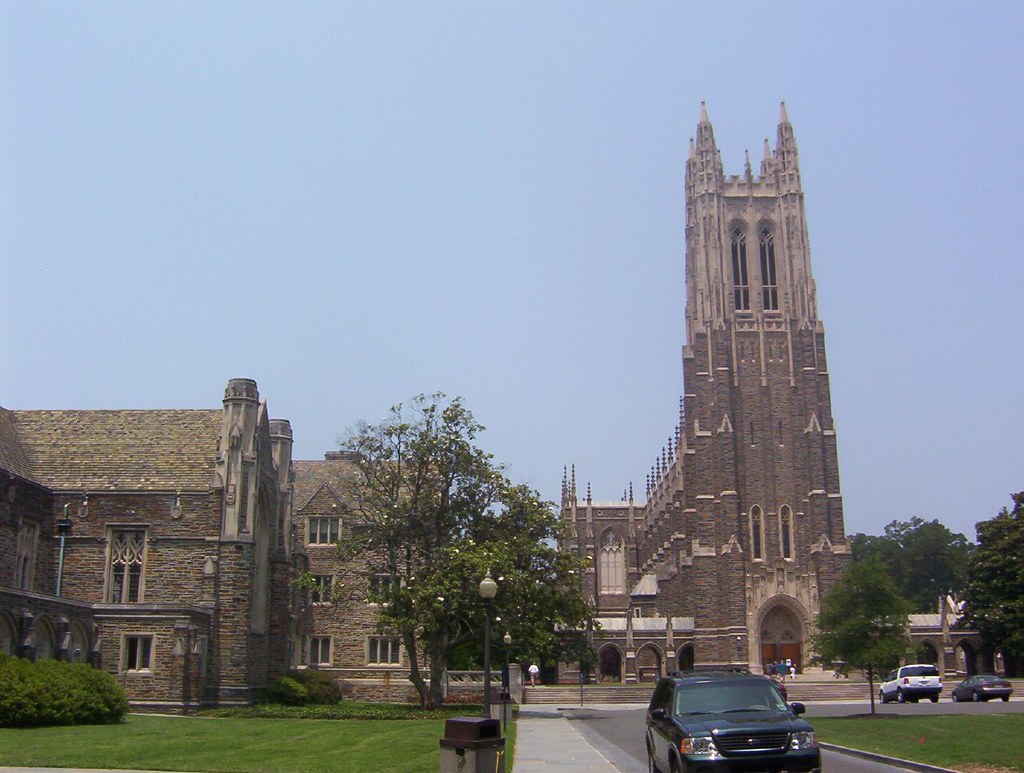
Duke University, a distinguished private research institution nestled in Durham, North Carolina, U.S., stands as a beacon of academic excellence and historical significance. Since its humble beginnings, the university has evolved into a global leader, recognized for its rigorous scholarship, innovative research, and a campus renowned for its striking architecture. Its journey, marked by visionary philanthropy and continuous development, has positioned it as one of the nation’s foremost educational establishments.
This in-depth exploration aims to provide a comprehensive understanding of Duke University, tracing its origins and development through various pivotal moments that have defined its identity. From its initial chartering to its modern-day international presence, the institution’s commitment to education, community, and discovery has remained unwavering. We will examine the intricate tapestry of its past, the evolution of its physical landscape, and the profound impact of its academic and social endeavors.
In this initial segment, we delve into the foundational chapters of Duke’s narrative, beginning with its earliest iterations and the philanthropic spirit that catalyzed its transformation. We will explore the distinctive architectural philosophies that define its Durham campuses, scrutinize the significant strides made in fostering an inclusive environment, acknowledge the formidable legacy forged in intercollegiate athletics, and chart the strategic expansion of its influence onto the global academic stage. These elements collectively paint a vivid picture of the university’s formative years and its inherent drive for excellence.
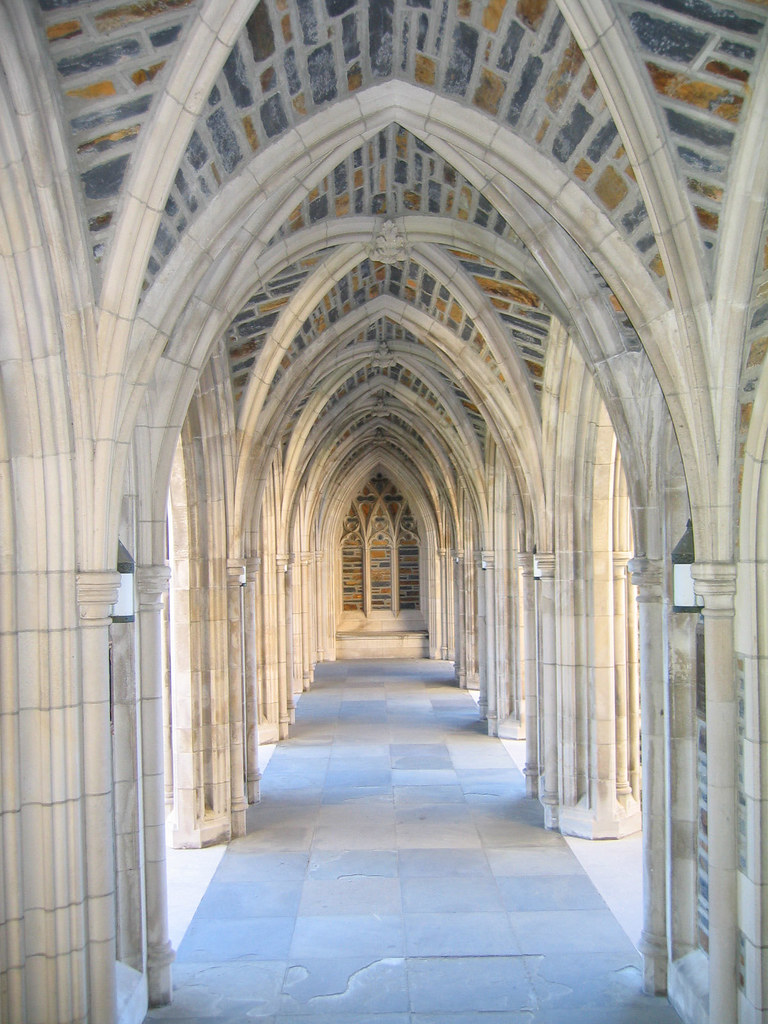
1. **From Humble Beginnings: The Founding and Evolution of Duke University**The origins of Duke University trace back to 1838, when it first opened its doors as Brown’s Schoolhouse. This private subscription school was founded in Randolph County, North Carolina, within the present-day town of Trinity. The initial establishment was a testament to local initiative, providing educational opportunities in a burgeoning community.
Organized by the Union Institute Society, a collective endeavor of Methodists and Quakers, Brown’s Schoolhouse quickly gained momentum. By 1841, the institution secured a charter from North Carolina, officially becoming the Union Institute Academy. This formal recognition marked a crucial step in its institutional development, laying the groundwork for future expansions and a broadened educational mission.
Further evolution saw the academy renamed Normal College in 1851, reflecting an emphasis on teacher training and pedagogical instruction. Subsequently, in 1859, it adopted the name Trinity College, a designation that underscored the significant support it received from the Methodist Church. This connection to the Methodist denomination would prove to be an enduring theme in the university’s history, influencing its values and growth.
A pivotal relocation occurred in 1892, when Trinity College moved to Durham, a strategic decision largely facilitated by the considerable generosity of Julian S. Carr and Washington Duke. These powerful and respected Methodists had amassed significant wealth through their involvement in the tobacco and electrical industries. Their contributions were instrumental in establishing the college in its new, more expansive home, setting the stage for its dramatic transformation in the 20th century.
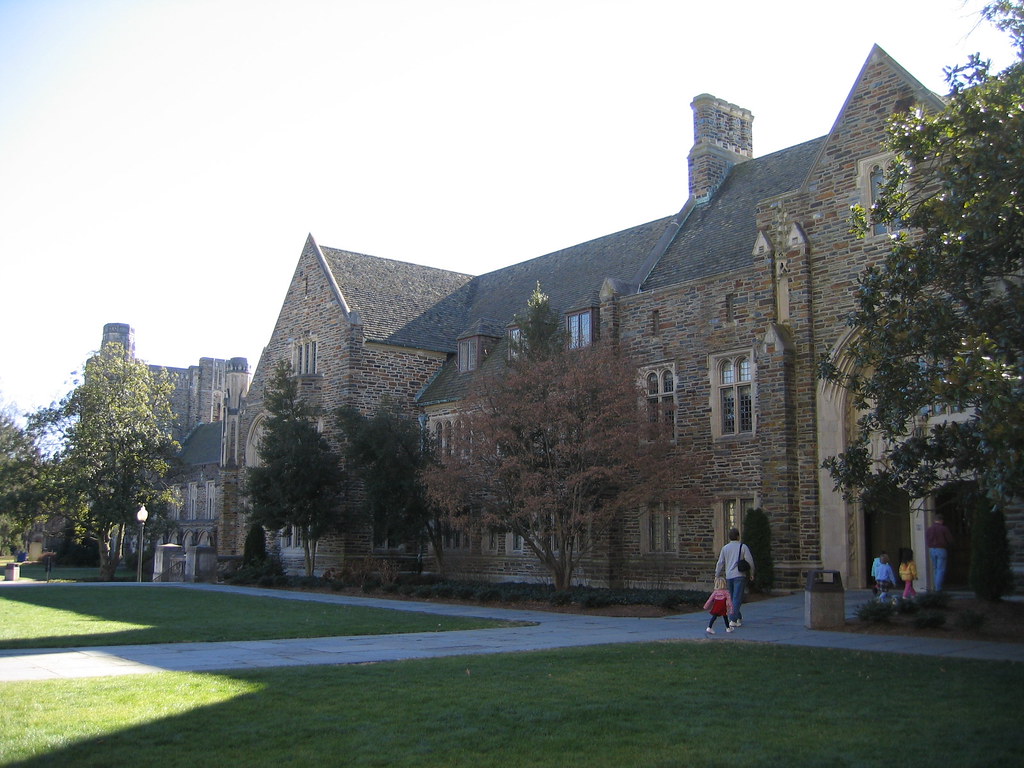
2. **The Transformative Power of Philanthropy: James B. Duke and The Duke Endowment**The trajectory of Trinity College was profoundly altered in 1924 with the establishment of The Duke Endowment by James B. Duke, the son of Washington Duke. This monumental act of philanthropy involved a substantial $40 million trust fund, earmarking income for distribution to a diverse array of beneficiaries including hospitals, orphanages, the Methodist Church, and four colleges, with Trinity College among them. This endowment represented a paradigm shift for the institution, providing an unprecedented financial foundation for growth.
William Preston Few, who continued as president of Trinity College, played a crucial role in advocating for a name change following this extraordinary donation. He insisted that the institution be renamed Duke University, not only to honor the immense generosity of the Duke family but also to differentiate it from numerous other colleges sharing the “Trinity” name. Few envisioned the university as a southern counterpart to established institutions like Yale and Harvard, and a distinct identity was seen as essential for achieving this ambitious goal.
Initially, James B. Duke harbored reservations about the proposed name change, concerned that it might appear self-serving. However, he eventually yielded to President Few’s compelling rationale, accepting the proposal as a fitting memorial to his deceased father, Washington Duke. This agreement cemented the institution’s new identity, signaling a new era of expansion and national prominence under the Duke name.
The financial influx from The Duke Endowment spurred rapid development across the university. Duke’s original campus, East Campus, was rebuilt from 1925 to 1927 with Georgian-style buildings. By 1930, the majority of the Collegiate Gothic-style buildings on the campus one mile (1.6 km) west were completed, and construction on West Campus culminated with the completion of Duke Chapel in 1935.
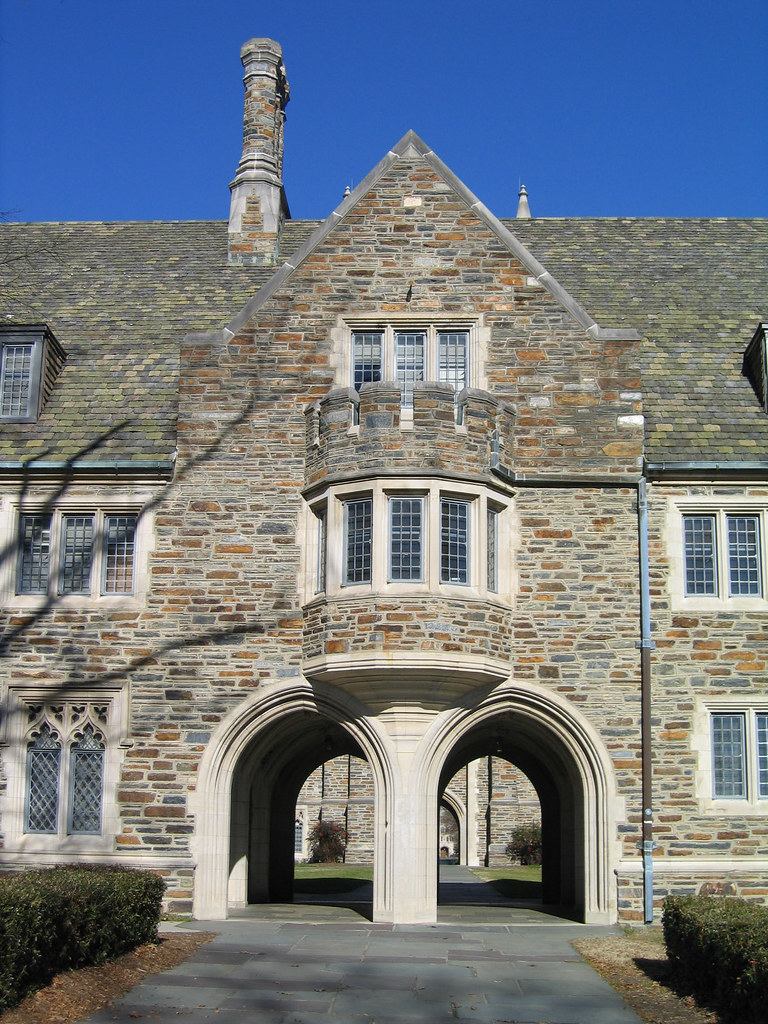
3. **Architectural Masterpiece: The Collegiate Gothic Splendor of West Campus**Duke University’s West Campus is a visual testament to architectural grandeur, often affectionately referred to by students as “the Gothic Wonderland.” This distinctive Collegiate Gothic style, which dominates the campus, was a deliberate choice by the university’s founders, influenced by their visits to esteemed institutions such as the University of Chicago, Yale, and Princeton. The aesthetic sought to evoke a sense of timeless tradition and academic gravitas.
A significant portion of West Campus’s design is attributed to Julian Abele, one of the first prominent African-American architects, who served as the chief designer in the offices of architect Horace Trumbauer. Abele’s vision shaped the intricate details and overall coherence of the campus, leaving an indelible mark on Duke’s physical identity. His work showcases an early, somewhat unadorned design for the residential quadrangles, contrasting with the more elaborate late French and Italian influences evident in the academic quadrangles.
The crowning jewel of West Campus is undoubtedly the Duke Chapel, a towering structure that stands at the campus’s center and highest point of elevation. Constructed from 1930 to 1935 using local Duke stone, the chapel is an architectural marvel. It boasts a seating capacity of nearly 1,600 people and, at 210 feet (64 meters), remains one of the tallest buildings in Durham County, serving as a powerful icon for the university and a striking example of Gothic craftsmanship.
Beyond its aesthetic appeal, the Collegiate Gothic design was intended to create an environment that felt deeply rooted, as if “the university was growing out of the ground, like it had been here forever.” This sense of permanence and tradition is central to West Campus’s identity, providing a distinguished setting for academic pursuits. In 2011, this architectural beauty was recognized by Travel+Leisure, which listed Duke among the most beautiful college campuses in the United States.
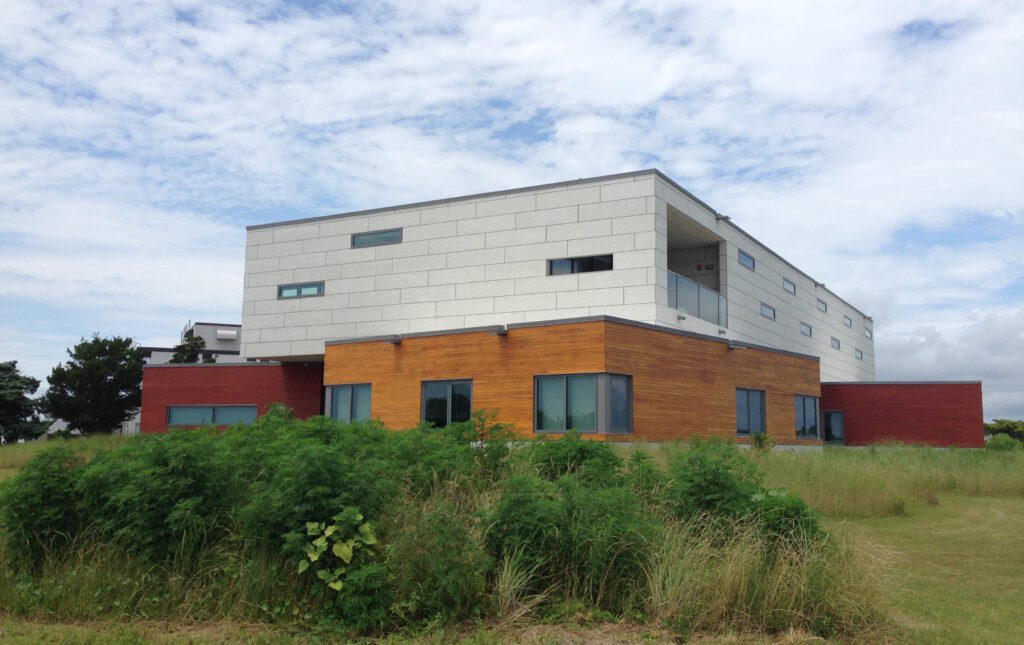
4. **The Georgian Charm of East Campus: Nurturing First-Year Foundations**East Campus holds a unique and vital position within Duke University, serving as the original location of the institution after its relocation to Durham in 1892. Today, it exclusively houses the university’s freshmen dormitories, a deliberate strategy implemented since the 1995–96 academic year to foster a strong sense of class unity among incoming students. This intentional design ensures that all first-year students share a common foundational experience.
The architectural style of East Campus stands in distinct contrast to the Gothic grandeur of West Campus, characterized instead by its charming Georgian-style buildings. This aesthetic was adopted during the campus’s rebuilding phase between 1925 and 1927, providing a stately yet welcoming environment for new students. The campus encompasses 172 acres (700,000 square meters) and is situated 1.5 miles (2.4 kilometers) from West Campus, connected by a free bus service.
Beyond residential life, East Campus is also home to several key academic departments, reflecting its historical significance and continued contribution to the university’s intellectual life. Departments such as Art History, History, Cultural Anthropology, Literature, Music, Philosophy, and Women’s Studies are housed there. Additionally, programs in dance, drama, education, film, and the University Writing Program contribute to the vibrant academic atmosphere of this campus.
East Campus is designed to be a self-sufficient community, offering a comprehensive array of facilities to support its residents. It contains not only the freshmen residence halls but also a dining hall, a coffee shop, a post office, the Lilly Library, Baldwin Auditorium, a theater, Brodie Gym, tennis courts, and several disc golf baskets, alongside a walking track. This self-contained environment facilitates both academic engagement and social integration for Duke’s newest students, establishing a strong community foundation for their university journey.
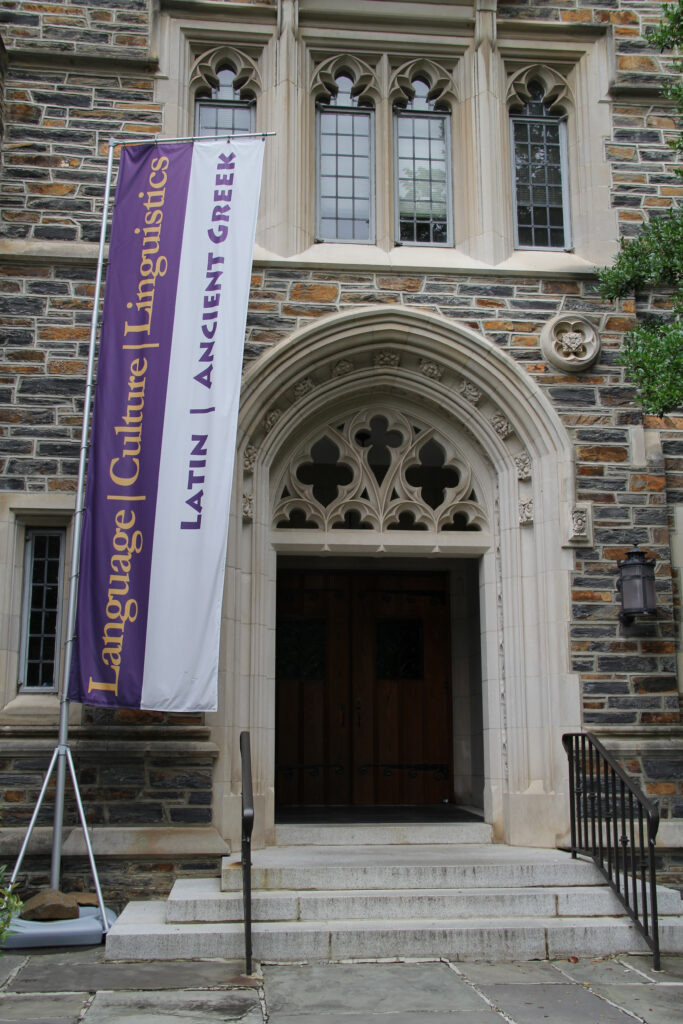
5. **A Pivotal Journey Towards Inclusivity: Desegregation and Social Change at Duke**Duke University’s path toward becoming a truly inclusive institution has been a complex and, at times, challenging journey, marked by significant milestones and periods of introspection. Early strides towards gender equality were evident in 1878, when Trinity College (then in Randolph County) awarded A.B. degrees to three sisters—Mary, Persis, and Theresa Giles—who had studied both with private tutors and in classes with men. With the college’s relocation to Durham in 1892, the board of trustees formally voted to again allow women to be admitted to classes as day students, and a woman’s residential dormitory, the Mary Duke Building, was constructed in 1897. Washington Duke’s 1896 donation explicitly stipulated that women be placed “on an equal footing with men,” although he later withdrew this provision in 1903. By 1904, 54 women were enrolled, and in 1930, the Woman’s College was established as a coordinate to the men’s undergraduate college, merging back with Trinity in 1972.
However, the university’s policy in the early 20th century explicitly excluded Black individuals from admissions and restricted their access to certain campus facilities, such as dining halls and dorm housing. This stark reality represented a significant institutional challenge, reflecting broader societal prejudices of the era. The first concerted effort to push for desegregation of Duke’s admission policy emerged in 1948, when a group of divinity school students petitioned for the desegregation of their school, marking a crucial internal challenge to the existing order.
The institution gradually began to address these discriminatory policies, enrolling its first Black graduate students in 1961. This was followed by the admission of Black undergraduates in September 1963, a landmark decision that officially desegregated the undergraduate college, as confirmed by the Board of Trustees. Yet, the process of full integration was ongoing, with the teaching staff remaining entirely white until 1966, indicating the incremental nature of these fundamental changes.
The late 1960s witnessed increased activism on campus, highlighting the need for deeper institutional change beyond formal desegregation. Martin Luther King Jr. spoke at the university in November 1964, emphasizing the progress of the Civil Rights Movement and inspiring further calls for justice. A particularly pivotal moment occurred in 1969 with the Allen Building takeover, where dozens of Black students barricaded themselves inside to protest issues ranging from a “white top and a black bottom” power structure and high attrition rates for Black students to lack of unionization rights for nonacademic employees and “racist living conditions.” University president Vincent Price later recognized this event as “one of the most pivotal moments in our university’s history,” asserting that the protestors “changed this place for the better and improved the lives of many who followed,” underscoring Duke’s ongoing commitment to learning from its past and evolving into a more equitable community.
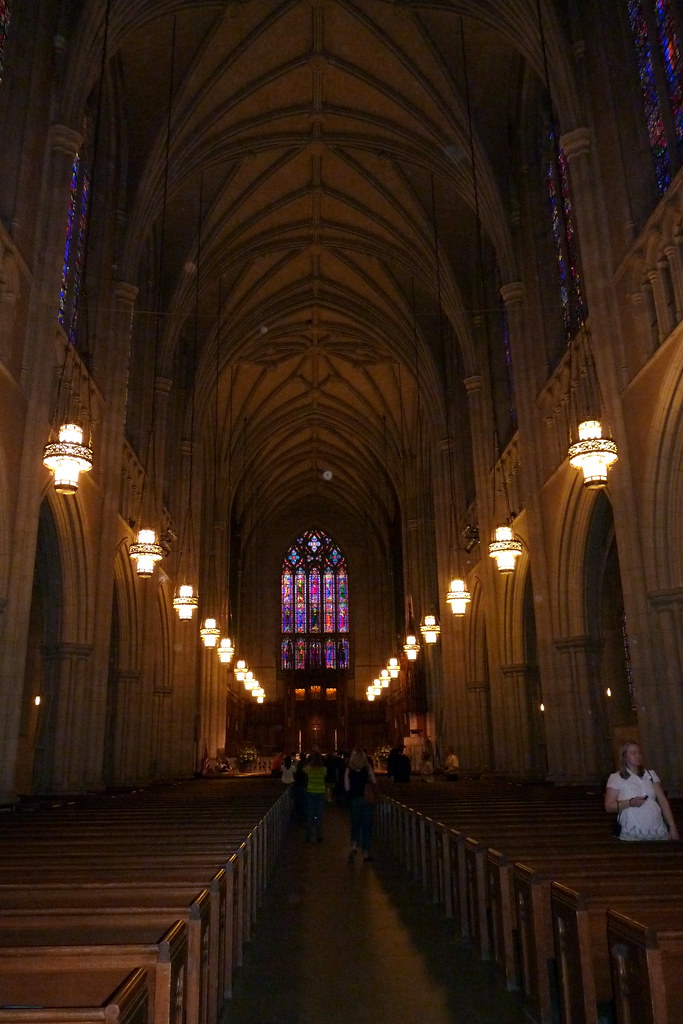
6. **The Unrivaled Spirit of the Blue Devils: Duke’s Storied Athletic Achievements**The athletic programs at Duke University, known collectively as the Blue Devils, are synonymous with excellence and a fiercely competitive spirit that has captivated fans for generations. Competing in 27 NCAA Division I intercollegiate sports, Duke is a charter member of the prestigious Atlantic Coast Conference (ACC), a league renowned for its high-caliber athletic competition. This commitment to competitive sports has yielded an impressive array of successes across various disciplines.
Duke’s athletic prowess is highlighted by its remarkable record in NCAA championships. The university has secured 17 NCAA team championships, a testament to the consistent strength and dedication of its programs. Beyond team accolades, Duke student-athletes have also excelled individually, clinching 24 individual national championships, further solidifying the institution’s reputation as a breeding ground for top-tier talent.
Memorable moments dot Duke’s athletic history, extending beyond its numerous championship titles. In 1942, during World War II, Duke hosted and competed in the first Rose Bowl ever played outside California, with the game taking place in Wallace Wade Stadium. This unique event showcased the university’s capacity to adapt and contribute to national morale during challenging times, cementing a place in collegiate football lore.
While many sports contribute to Duke’s esteemed athletic standing, the men’s basketball team has achieved particular renown. They captured their first NCAA championships in quick succession in 1991 and 1992, establishing a dynasty that continued with further titles in 2001, 2010, and 2015. However, success is not limited to basketball; the men’s soccer team also broke ground by capturing Duke’s first NCAA championship in 1986, demonstrating the breadth of the Blue Devils’ athletic excellence and commitment to achieving peak performance across its diverse sports programs.
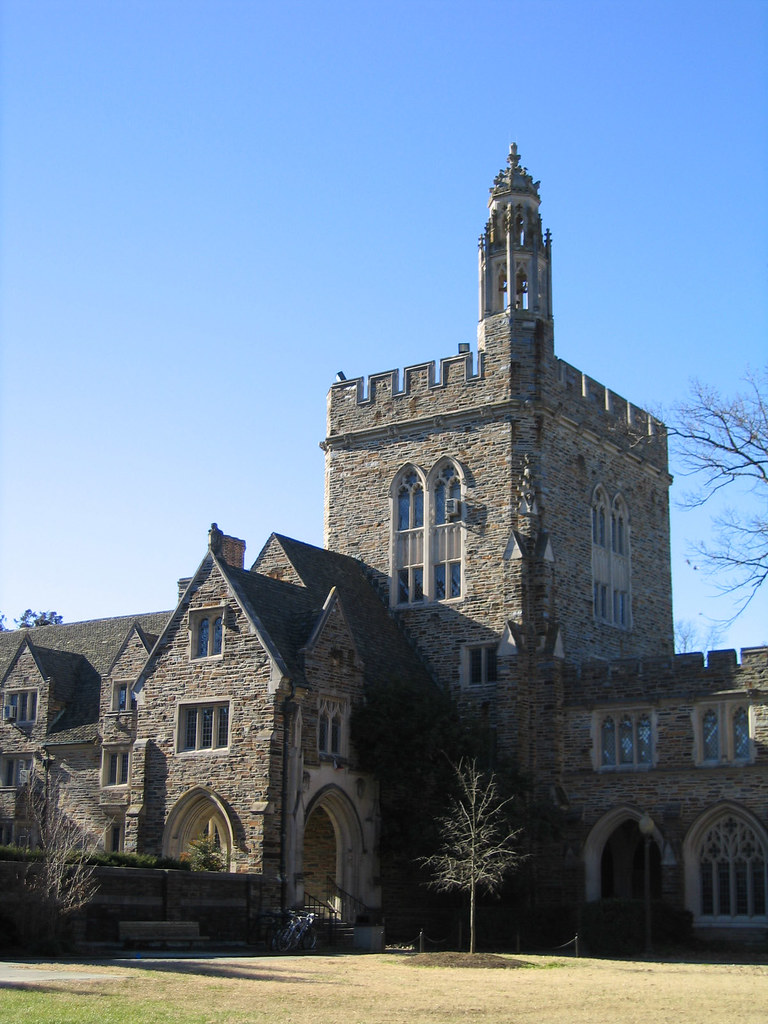
7. **A Global Vision: The Establishment of Duke-NUS Medical School and Duke Kunshan University**In its continuous pursuit of academic excellence and global reach, Duke University has strategically expanded its presence beyond North Carolina, establishing significant international partnerships that underscore its commitment to a worldwide educational mission. A landmark initiative materialized in April 2005, when Duke formally partnered with the National University of Singapore to establish the Duke-NUS Medical School. This collaboration marked a crucial step in extending Duke’s pedagogical model and research capabilities to Asia.
Duke-NUS Medical School was designed to complement Singapore’s existing undergraduate medical school, providing a distinct and advanced curriculum largely based on that of the Duke University School of Medicine. The school welcomed its first entering class in 2007, quickly establishing itself as a hub for medical education and research in the region. Its diverse student body includes 60 percent from Singapore and 40 percent from over 20 different countries, fostering a rich international learning environment.
The unique governance structure of Duke-NUS highlights the depth of the partnership: while it operates within the National University of Singapore system, it is overseen by a governing board that includes a Duke representative holding veto power over any academic decision. This arrangement ensures that the high standards and academic integrity associated with Duke University are maintained, reinforcing the credibility and quality of the medical education provided.
Further cementing its global footprint, Duke University established Duke Kunshan University (DKU) in 2013, a collaborative effort with Wuhan University and the city of Kunshan, China. DKU offers Duke-degree graduate programs and an undergraduate liberal arts college, providing students with a unique transnational educational experience. Undergraduates at DKU are awarded degrees from both Duke Kunshan University and Duke University upon graduation, integrating them into the alumni networks of both esteemed institutions and highlighting Duke’s proactive role in fostering international academic exchange and collaboration.
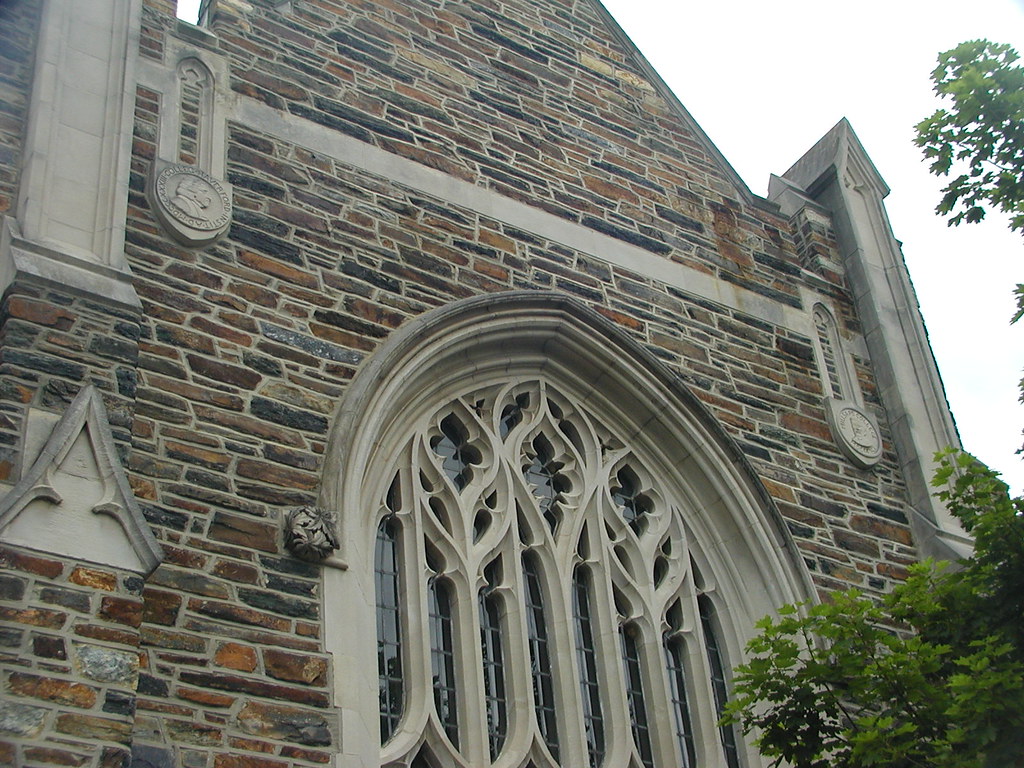
8. **The Expansive Duke University Health System**This segment highlights the expansive Duke University Health System, a critical component of the university’s mission. Central to this system is Duke University Hospital, established in 1930. As a 957-acute care bed academic tertiary care facility, it serves as a flagship teaching hospital. It provides extensive medical services across Durham, Wake Counties, and surrounding areas of North Carolina.
The Duke University Health System integrates the Duke University School of Medicine, School of Nursing, and Duke Clinic with its member hospitals. This comprehensive structure fosters a robust environment for research, clinical care, and medical education. Recognized as one of three Level I referral centers for the Research Triangle, it underscores Duke’s commitment to advancing healthcare and delivering high-quality patient services.
A significant enhancement was the Duke Cancer Center, which opened in early 2012 adjacent to Duke Hospital. This specialized facility consolidates nearly all of Duke’s outpatient clinical care services. Its establishment represents a focused effort to provide advanced oncological treatment and research, improving patient outcomes and furthering cancer discovery.
Read more about: Investing in Tomorrow: 13 Fastest-Growing US Cities with Economic Momentum

9. **Iconic Campus Landmarks: Duke Chapel and the Sarah P. Duke Gardens**Duke University’s campus is graced by iconic landmarks blending functional purpose with symbolic significance. The Duke Chapel, a Collegiate Gothic masterpiece completed in 1935, remains a central and towering feature on West Campus. Rising 210 feet (64 meters) from local Duke stone, it is one of Durham County’s tallest structures.
More than an architectural marvel, the chapel seats nearly 1,600 people and houses a 5,200-pipe organ. It actively supports university life through worship, concerts, and ceremonies. While nonsectarian, the chapel reflects historical ties with the United Methodist Church, standing as an enduring icon for the community.
Another cherished landmark is the Sarah P. Duke Gardens, a sprawling 54-acre (220,000 square meter) botanical sanctuary established in the early 1930s. Situated between West and Central Campuses, these gardens attract over 300,000 visitors annually. Meticulously divided into four major sections, they offer diverse botanical experiences, enriching the campus with tranquility and living study.
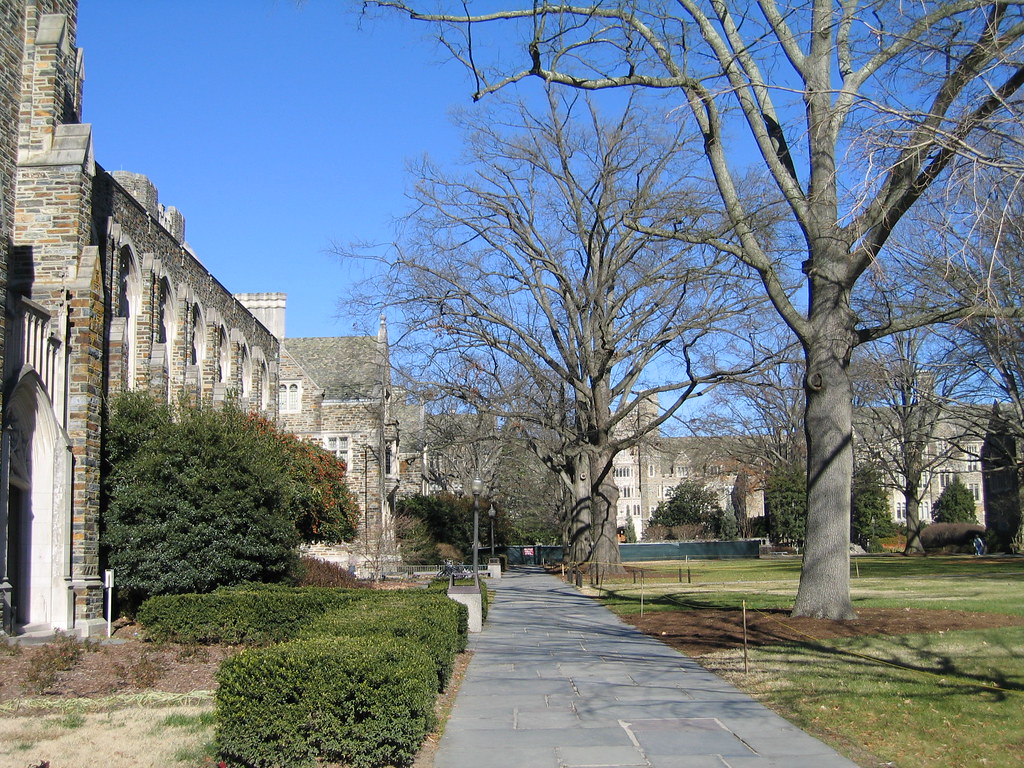
10. **Environmental Stewardship: Duke Forest and the Duke Lemur Center**Duke University demonstrates profound environmental commitment through Duke Forest and the Duke Lemur Center. Established in 1931, Duke Forest spans 7,044 acres (28.51 square kilometers) across six divisions west of West Campus. It stands as the largest private research forest in North Carolina and among the nation’s largest, serving as a vital living laboratory.
This expansive forest is extensively utilized for scientific inquiry, showcasing diverse forest stand types and silvicultural treatments. It hosts facilities like the Aquatic Research Facility and the Forest Carbon Transfer and Storage (FACTS-I) research facility. Permanent towers for micrometeorological studies, alongside dedicated areas for animal behavior and ecosystem research, reinforce its role in environmental science.
Within Duke Forest, the Duke Lemur Center operates as an internationally recognized sanctuary for rare and endangered strepsirrhine primates. Founded in 1966, this center covers 85 acres (34 hectares), housing nearly 300 animals from 25 species. The center plays a crucial role in conservation through research, breeding, and public education, balancing scientific endeavors with community engagement via public trails.
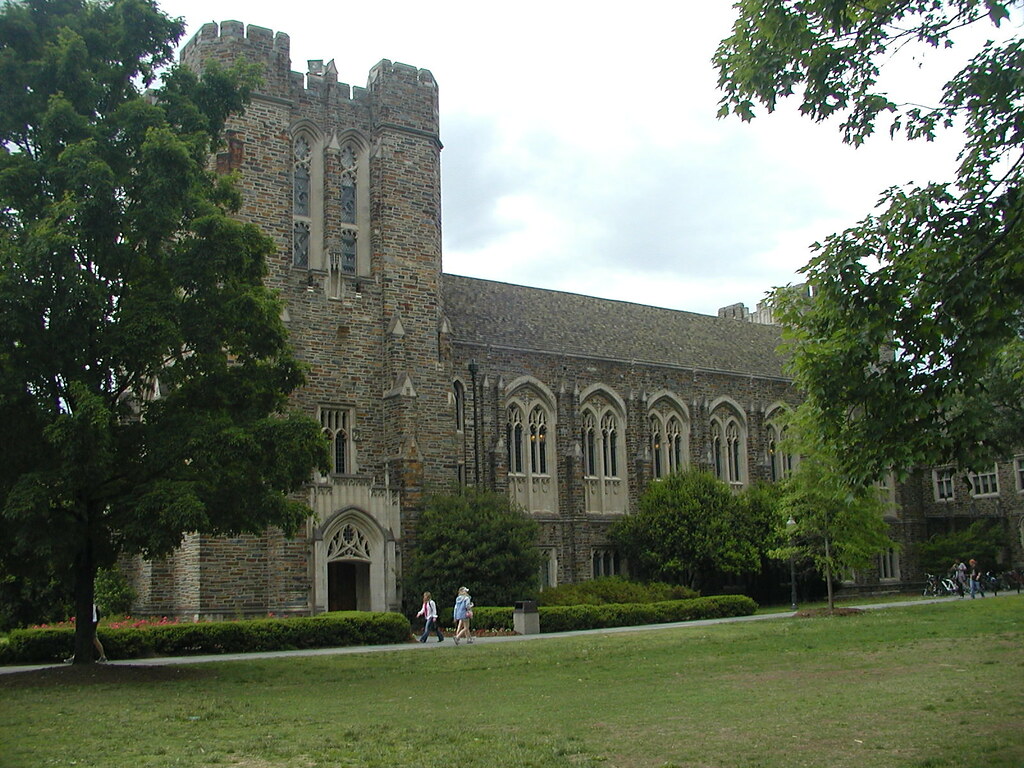
11. **The Distinctive Character of Duke Stone**A defining feature of Duke University’s Collegiate Gothic West Campus is the distinctive Duke stone, contributing profoundly to the university’s aesthetic. This geological element is credited for making the institution “look like one from the start,” renowned for its rich palette of seven primary colors and seventeen shades, lending visual warmth and an aged character.
The decision to use Duke stone was practical, aiming for a deeply rooted appearance. Initially, James B. Duke considered stone from a Princeton quarry, but plans shifted to a local source to reduce costs and enhance authenticity. Duke University Comptroller Frank Clyde Brown identified and acquired a Hillsborough quarry in 1925, noting Duke stone’s “warmer and softer coloring” and “much more attractive antique effect” compared to its alternative.
Geologically, Duke stone is a Carolina ‘slate’ or ‘bluestone,’ a metamorphic phyllite rock with andesite and dacite mineral composition. It originated around 650 million years ago in the Iapetus Ocean, formed by volcanic islands known as ‘Carolinia.’ While the quarry within Duke Forest is carefully managed, high extraction costs and specialized masonry have led the university to increasingly use brick mixes imitating the stone’s distinct colors in newer projects.
Read more about: Investing in Tomorrow: 13 Fastest-Growing US Cities with Economic Momentum
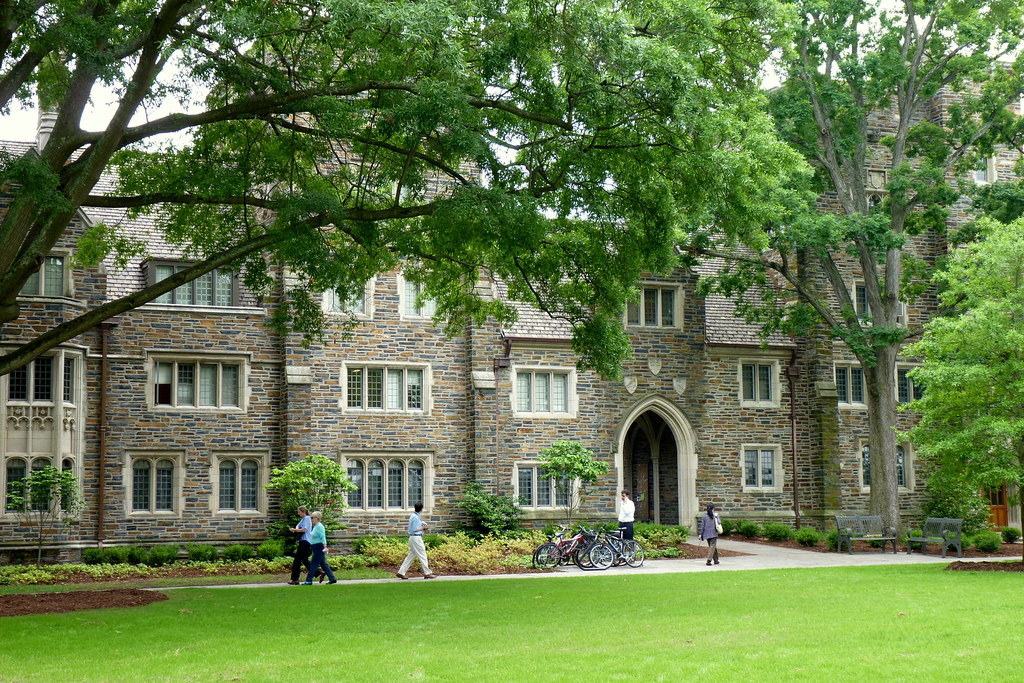
12. **Continuous Campus Development and Modern Facilities**Duke University’s commitment to providing a state-of-the-art environment is evident in its continuous campus development. From 2001 to 2005, the “Building on Excellence” plan saw $835 million invested in 34 major construction projects, enhancing various schools and departments and laying essential groundwork for academic and residential needs.
Recent years brought notable additions like Environmental Hall for the Nicholas School of the Environment in early 2014, a LEED platinum-certified building. The School of Nursing also expanded with a 45,000 square foot addition in April 2014. These projects highlight comprehensive investment in specialized academic facilities and broader support infrastructure.
Further modernizations included the final phase of renovations to Duke’s West Campus libraries, culminating in the 2015 reopening of the David M. Rubenstein Rare Book and Manuscript Library after a $60 million upgrade. Transformations at Gross Hall and Baldwin Auditorium, alongside new constructions such as the Events Pavilion in 2013, demonstrate Duke’s proactive approach to maintaining a cutting-edge and adaptable campus environment.
Read more about: Investing in Tomorrow: 13 Fastest-Growing US Cities with Economic Momentum
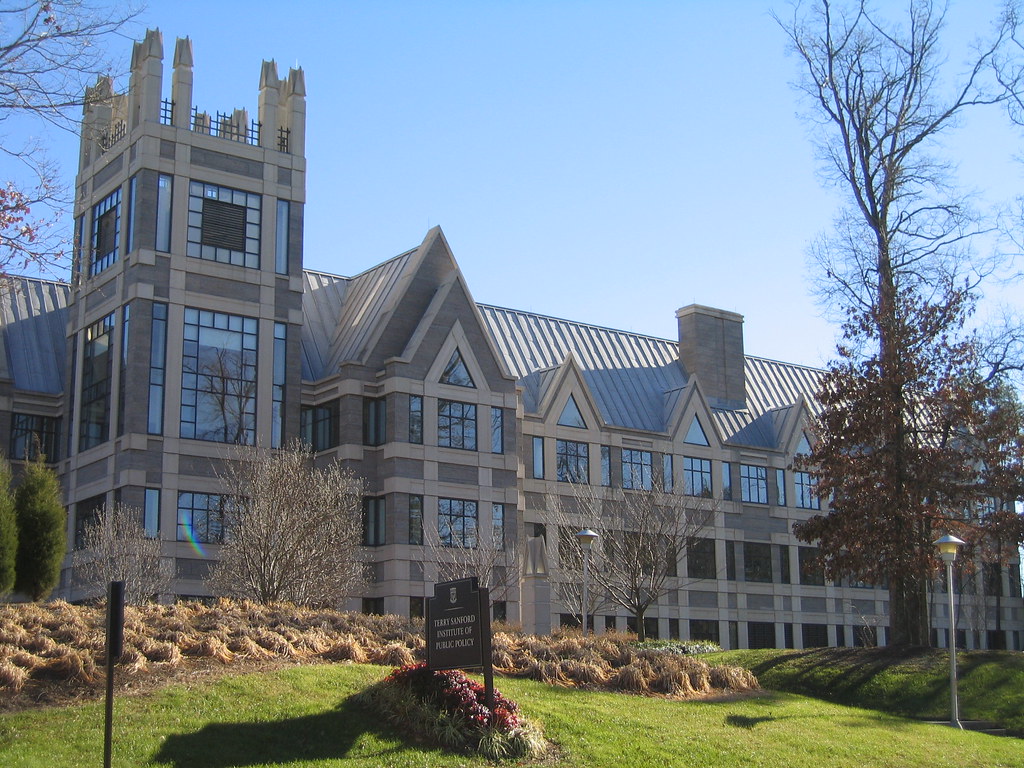
13. **Leading-Edge Research and Academic Excellence**Duke University is globally recognized for its leading-edge research and exemplary academic excellence across diverse schools and programs. In 2019, the university expended over $1.2 billion on research initiatives, underscoring significant contributions to scientific discovery. Its robust funding is supported by an $11.9 billion endowment, positioning Duke as the twelfth-wealthiest private academic institution in the United States.
The university’s formidable research capabilities are epitomized by facilities like the Levine Science Research Center, the largest single-site interdisciplinary research facility among American universities. Duke also participates in the National Lambda Rail Network and extends its educational mission through programs for gifted children, such as the Talent Identification Program, highlighting commitment to advanced research and future talent.
Admission to Duke is highly competitive, consistently defined by U.S. News & World Report as “most selective.” For the Class of 2028, nearly 55,000 applications resulted in an overall acceptance rate of 5.1%. This selectivity ensures an exceptionally talented student body, with the Class of 2024’s median ACT range of 34–35 and SAT range of 1500–1570 for accepted students, though a test-optional policy began in 2020–21.
Duke actively supports its students through comprehensive financial aid, practicing need-blind admissions and meeting 100% of demonstrated financial needs. Approximately 50 percent of all Duke students receive assistance. The average need-based grant for 2019–20 was $54,255, underscoring its generosity, earning it a top ranking from the Chronicle of Higher Education for supporting financially neediest students.
The institution’s academic prestige is further affirmed by student success in postgraduate pursuits. From 2001 to 2011, Duke consistently ranked sixth nationally among private universities for the highest number of prestigious scholarships. Its professional schools attract top talent, evidenced by high acceptance rates for Medicine and Law. Undergraduate offerings are extensive, spanning 46 arts and sciences majors, four engineering majors, and 52 minors, with flexible programs for self-designed interdisciplinary studies.
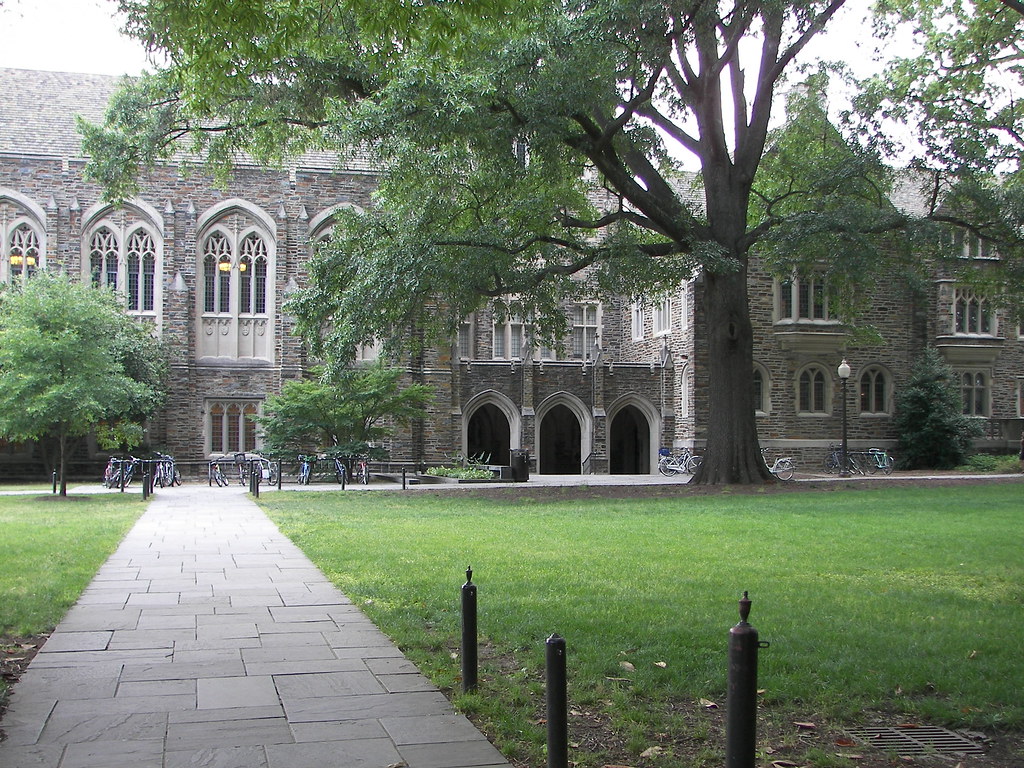
14. **Navigating and Learning from Past Controversies**Duke University, like many established institutions, has navigated various controversies, demonstrating an evolving commitment to accountability and ethical reflection. These challenging instances have often served as catalysts for institutional learning and change, contributing to the university’s ongoing development and reinforcing its core values.
A prominent and widely publicized incident was the 2006 Duke lacrosse rape hoax. Three team members were falsely accused by Crystal Mangum, an allegation that garnered significant national media attention. On April 11, 2007, North Carolina Attorney General Roy Cooper declared the players innocent, dropping all charges. The District Attorney, Mike Nifong, was subsequently disbarred, and Mangum later admitted in December 2024 that she “made up a story that wasn’t true.”
Beyond legal challenges, Duke confronted issues pertaining to academic integrity. In 2019, the university paid $112.5 million to settle False Claims Act allegations related to scientific research misconduct. This stemmed from a researcher’s falsification or fabrication of data to secure grants, exposed through a whistleblower’s lawsuit, underscoring the need for enhanced oversight.
In response, Duke established an advisory panel from Caltech, Stanford, and Rockefeller University. Based on their recommendations, the Duke Office of Scientific Integrity (DOSI) was created, led by engineering professor Lawrence Carin. This initiative aimed to align Duke’s research practices with peer institutions like Johns Hopkins University, signifying a commitment to preventing future misconduct and upholding scientific integrity.
Furthermore, Duke has addressed historical legacies and symbols on campus. In 2014, the university removed the name of Charles B. Aycock, a white supremacist governor, from a dormitory. In August 2017, the statue of Confederate Gen. Robert E. Lee was removed from Duke Chapel’s entrance. These actions reflect an ongoing process of confronting elements of its past that conflict with its evolving values of inclusivity, fostering a more welcoming and equitable community.
Read more about: Oprah’s Golden Wisdom: The Transformative Advice That Shapes Careers and Lives, Including Adele’s Unforgettable Journey
As we conclude this comprehensive exploration, it becomes evident that Duke University is a dynamic institution, continually evolving while steadfastly upholding its foundational principles. From its philanthropic origins and distinctive architecture to its leading-edge health system, environmental stewardship, athletic triumphs, and diligent navigation of complex challenges, Duke’s narrative reflects a relentless pursuit of excellence. It stands as a testament to vision, adaptation, and an unwavering commitment to shaping both minds and the future, solidifying its place as a distinguished leader in higher education.



